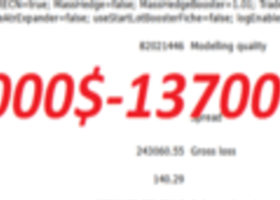Adding more exits to the trading system
Adding more exits in the optimization process can reduce the risk of curve fitting by increasing the robustness of the optimization results.
Curve fitting occurs when a model is over-optimized to fit the historical data, rather than generalizing to future data. This can lead to overfitting, where the model performs well on the historical data but fails to generalize to new, unseen data.
By adding more exits, the optimization process becomes less reliant on a single exit strategy and instead incorporates multiple exit strategies, which can lead to a more robust optimization process. This reduces the risk of overfitting, as the optimization process is no longer focused on optimizing a single exit strategy, but instead is focused on optimizing a set of exits that work well together.
Additionally, adding more exits can also provide a more comprehensive view of the market, as each exit strategy can capture different market conditions and behaviors. This can lead to a more robust optimization process that is less sensitive to changes in market conditions.
It's important to note that adding more exits is just one way to reduce the risk of curve fitting during optimization, and there are other techniques and methods that can be used to prevent overfitting. These may include using more realistic historical data, using out-of-sample data to validate the model, and incorporating regularization techniques to prevent overfitting.
Adjusting input parameters step
The steps of the input parameters determine the granularity of the optimization process, and if the steps are set too small, the optimization process can become over-sensitive to small changes in the data, leading to overfitting. On the other hand, if the steps are set too large, the optimization process may miss important details in the data, leading to underfitting.
To adjust the input parameters, it's important to consider the following steps:
-
Determine the range of the input parameters: Establish the range of values that the input parameters can take, based on the historical data and market conditions.
-
Set the steps of the input parameters: Based on the range of the input parameters, set the steps of the input parameters such that they are neither too small nor too large.
-
Monitor the optimization process: Regularly monitor the optimization process to ensure that it's running smoothly and that the results are reasonable. If the optimization process is overfitting, consider increasing the steps of the input parameters to reduce sensitivity. If the optimization process is underfitting, consider decreasing the steps of the input parameters to capture more details in the data.
It's important to note that adjusting the input parameters is just one way to reduce the risk of curve fitting, and there are other techniques and methods that can be used to prevent overfitting. These may include using more realistic historical data, using out-of-sample data to validate the model, and incorporating regularization techniques to prevent overfitting.
For more trading resources, visit my profile https://www.mql5.com/en/users/doshur


